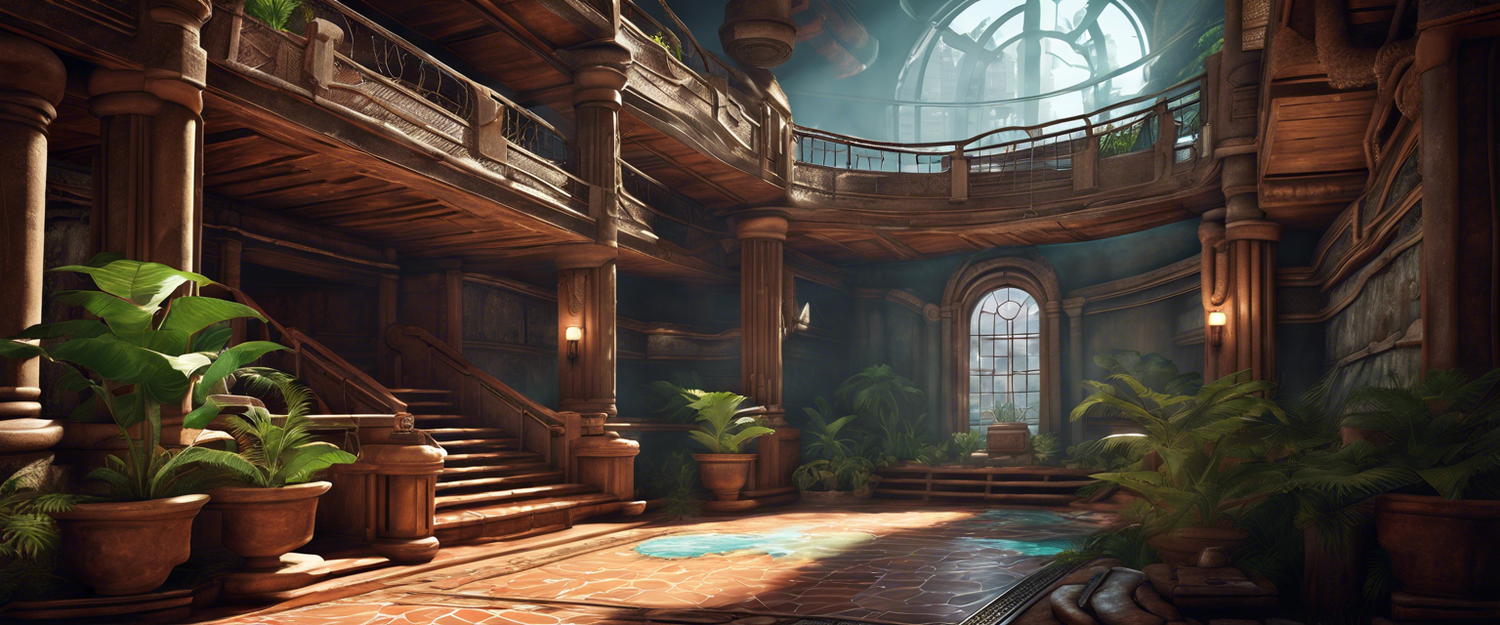Creating an Immersive First-Person Shooter Game Using Pygame
Developing a captivating first-person shooter (FPS) game requires careful planning and execution. In this guide, we will walk through the essential elements needed to design a thrilling FPS game using the Pygame library. From creating a window and loading images to implementing AI enemies and power-ups, you'll learn all the necessary steps to build a compelling player experience.
1. Installing Pygame
First things first, to create a Pygame project, you need to have the Pygame library installed on your computer. Open your command prompt or terminal and type the following command:
pip install pygameThis command will download and install the Pygame library, allowing you to access its functionalities for game development.
2. Creating a Game Window
Once you have Pygame installed, you can begin by creating a new game window. Here's how to do it:
import pygame
# Initialize Pygame
pygame.init()
# Set the width and height of the window
width = 800
height = 600
# Create a new window surface
window = pygame.display.set_mode((width, height))
# Set the caption of the window
pygame.display.set_caption("My Pygame Window")
# Keep the window open until the user closes it
while True:
for event in pygame.event.get():
if event.type == pygame.QUIT:
pygame.quit()
sys.exit()
pygame.display.update()This code snippet initializes Pygame, sets the window dimensions, creates a window, and keeps it open until the user chooses to close it.
3. Loading Images and Background Music
Next, you can enhance the visual experience by loading image files for your sprites and background music:
# Load an image file
image_path = "path/to/image.png"
image = pygame.image.load(image_path)
# Load background music
music_path = "path/to/music.mp3"
pygame.mixer.music.load(music_path)
# Start playing the music
pygame.mixer.music.play(-1)This snippet demonstrates how to load both an image and background music, with the latter playing indefinitely in the background.
4. Creating Player and Power-Up Sprites
To make the game interactive, you can create a player character and power-up sprites:
# Create a player character sprite
class Player(pygame.sprite.Sprite):
def __init__(self):
super().__init__()
self.image = pygame.image.load("path/to/player.png")
self.rect = self.image.get_rect()
self.rect.center = (width // 2, height // 2)
# Create a power-up sprite
class Powerup(pygame.sprite.Sprite):
def __init__(self):
super().__init__()
self.image = pygame.image.load("path/to/powerup.png")
self.rect = self.image.get_rect()
self.rect.center = (400, 300)
# Add sprites to a sprite group
all_sprites = pygame.sprite.Group()
player = Player()
powerup = Powerup()
all_sprites.add(player, powerup)In this code, we define a Player class and a Powerup class, each initializing their respective attributes and locations within the window.
5. Implementing AI Enemy Sprites
To raise the challenge, you can also add AI enemy sprites that move towards the player:
# Create an AI enemy sprite
class Enemy(pygame.sprite.Sprite):
def __init__(self):
super().__init__()
self.image = pygame.image.load("path/to/enemy.png")
self.rect = self.image.get_rect()
self.rect.center = (100, 100)
def update(self, player):
if player.rect.x > self.rect.x:
self.rect.x += 1
elif player.rect.x < self.rect.x:
self.rect.x -= 1
if player.rect.y > self.rect.y:
self.rect.y += 1
elif player.rect.y < self.rect.y:
self.rect.y -= 1
# Add enemy to sprite group
enemy = Enemy()
all_sprites.add(enemy)This code snippet demonstrates how to create an enemy that tracks the player's position, increasing the gameplay challenge.
6. Collision Detection and Scoring
Finally, to enhance gameplay, you need to detect collisions between the player and power-up/enemy sprites as well as manage the player's score:
# Check for collisions
if pygame.sprite.collide_rect(player, powerup):
score += 1
powerup.rect.center = (random_x, random_y) # Randomize the power-up's position
if pygame.sprite.collide_rect(player, enemy):
health -= 1 # Decrease health on enemy collisionThis will allow the player to collect points by collecting power-ups and will also enforce penalties when colliding with enemies.”
Conclusion
By following these steps, you can build an immersive FPS game using Pygame, complete with player control, power-ups, enemy AI, and scoring mechanics. Make sure to enhance your game further with more levels, different enemy types, and additional gameplay elements for a more engaging experience.



Laat een reactie achter
Alle reacties worden gemodereerd voordat ze worden gepubliceerd.
Deze site wordt beschermd door hCaptcha en het privacybeleid en de servicevoorwaarden van hCaptcha zijn van toepassing.